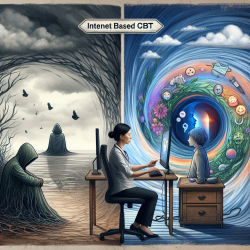Introduction
In today's fast-paced world, sleep is often overlooked, especially in adolescents. However, healthy sleep is crucial for cognitive, emotional, and physical development. The research article "Healthy Sleep for Healthy Schools: A Pilot Study of a Sleep Education Resource to Improve Adolescent Sleep" by Davis et al. provides valuable insights into how sleep education can be effectively integrated into school curricula to improve adolescent sleep behaviors.
Research Insights
The study evaluated the effectiveness of the Healthy Sleep for Healthy Schools (HS4HS) program, an eLearning resource delivered by teachers. This program aims to enhance students' sleep knowledge, promote healthy sleep practices, and ultimately improve sleep duration and reduce daytime sleepiness. The study involved 64 South Australian students in year 9, who participated in the program over six weeks.
Key Findings
- Significant improvement in students' sleep knowledge and healthy sleep practices post-intervention.
- Increased time in bed on both school days and weekends, although not statistically significant.
- Reduction in sleepiness, albeit slight and not statistically significant.
- Teachers found the program comprehensive, useful, and easy to incorporate into their curricula.
Implications for Practitioners
For practitioners in the field of speech-language pathology and education, the HS4HS program presents an opportunity to integrate sleep education into their practice. Here are some ways to leverage these findings:
- Incorporate Sleep Education: Advocate for the inclusion of sleep education in school curricula. Utilize resources like HS4HS to empower teachers and students.
- Collaborate with Educators: Work closely with teachers to provide training and resources that enable them to deliver sleep education effectively.
- Promote Healthy Sleep Practices: Encourage students and parents to adopt healthy sleep habits, emphasizing the importance of consistent sleep schedules and sleep hygiene.
- Conduct Further Research: Engage in further research to explore the long-term impacts of sleep education on adolescent health and academic performance.
Conclusion
The HS4HS program demonstrates that with minimal training, teachers can effectively deliver sleep education and improve sleep practices among students. As practitioners, we have the opportunity to champion this cause and ensure that sleep education becomes a staple in school curricula, fostering healthier, more productive future generations.
To read the original research paper, please follow this link: Healthy sleep for healthy schools: A pilot study of a sleep education resource to improve adolescent sleep.










